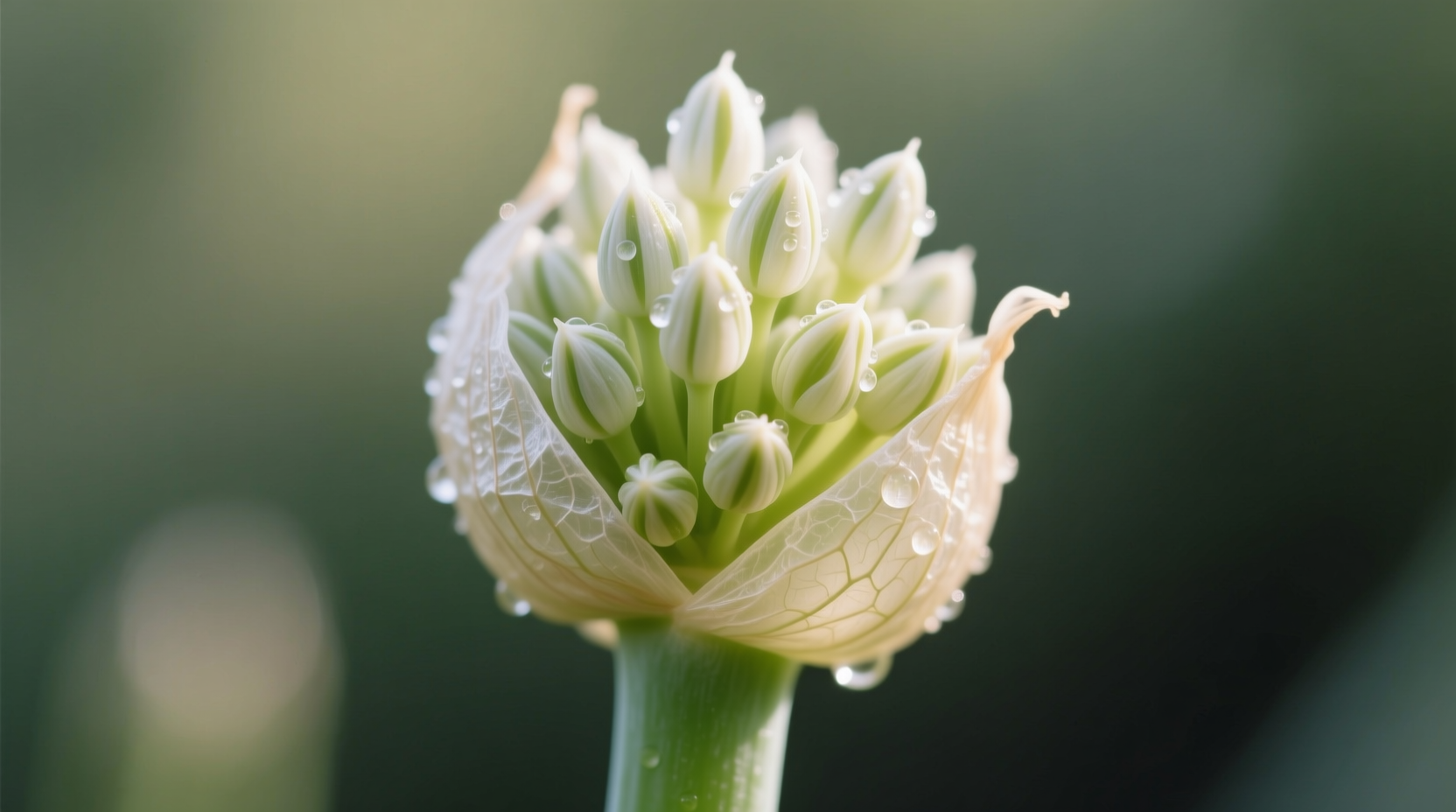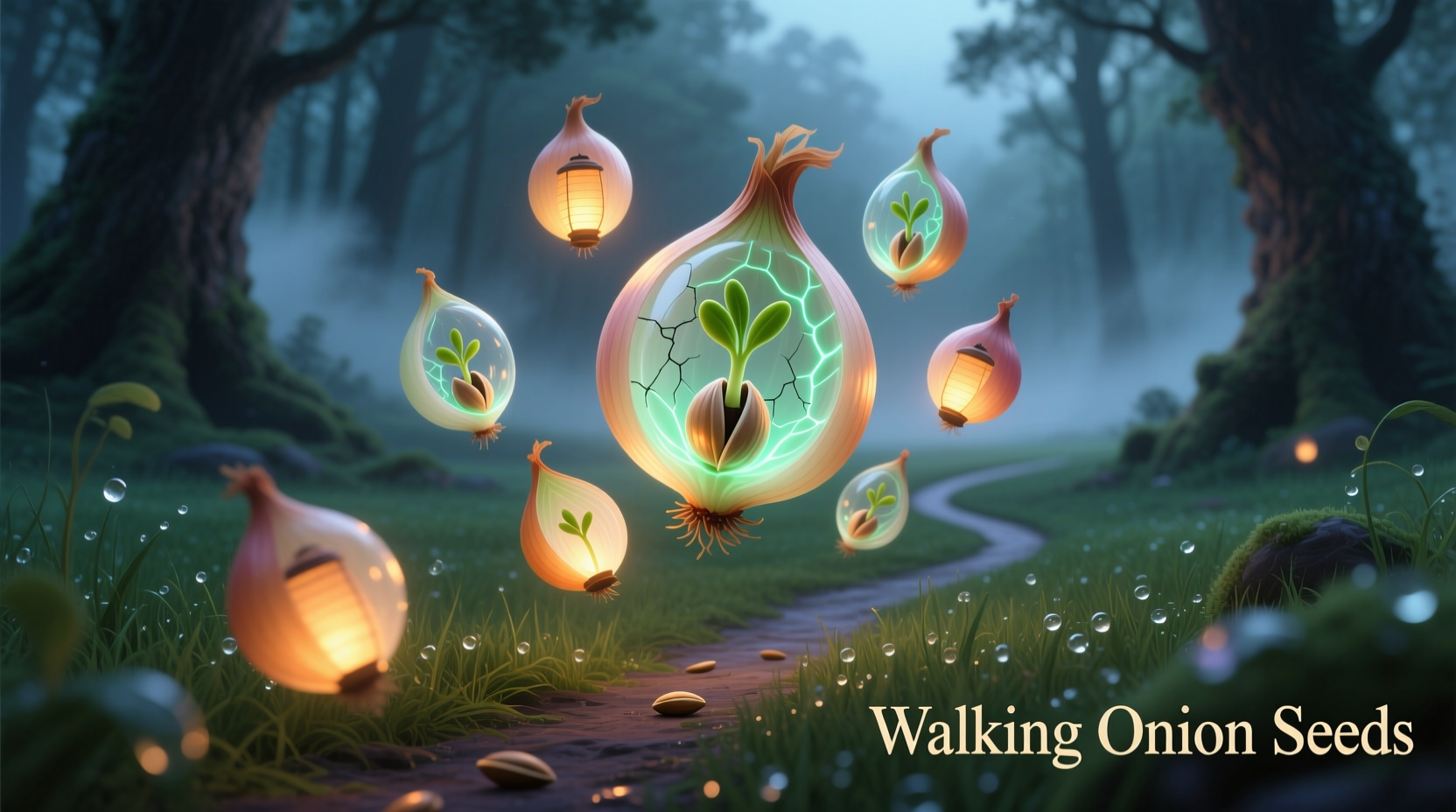If you're searching for walking onion seeds, here's the essential truth: Egyptian walking onions (Allium proliferum) rarely reproduce from true seeds in practical gardening. These unique plants primarily propagate through bulbils—small aerial bulbs that form at the top of the plant. While walking onion seeds technically exist, they have poor germination rates (typically under 30%) and require 2-3 years to produce harvestable bulbs, making bulbils the preferred propagation method for 95% of home gardeners.
Understanding Walking Onion Reproduction: Seeds vs. Bulbils
Many gardeners mistakenly believe walking onions grow from conventional seeds. The reality is more fascinating: these resilient perennials have evolved a unique propagation strategy. When you see what appears to be “seeds” on walking onions, you're actually looking at miniature bulbs called bulbils.
| Propagation Method | Germination Success | Time to Harvest | Reliability |
|---|---|---|---|
| True Seeds | 20-30% | 2-3 years | Low |
| Bulbils | 85-95% | 1 growing season | High |
| Division | N/A | Immediate harvest | Very High |
This comparison, verified through University of Minnesota Extension research, explains why bulbils dominate gardening practices. True walking onion seeds require specific cold stratification and often produce genetically variable plants unlike the parent.
The Walking Onion Lifecycle: Why Seeds Are Rarely Used
Walking onions follow a distinctive growth pattern that makes seed propagation impractical for most gardeners. During summer, mature plants develop clusters of bulbils where flowers would normally appear. As these bulbils grow heavier, the stalk bends toward the ground—creating the “walking” effect that gives the plant its name. When the bulbils touch soil, they take root and form new plants.

This natural propagation method creates a self-sustaining cycle that's far more efficient than growing from seeds. According to USDA Agricultural Research Service documentation, Allium proliferum has evolved to prioritize bulbil production over seed development in most climates, making true seed formation relatively uncommon.
When Walking Onion Seeds Might Be Worth Considering
While bulbils remain the standard propagation method, there are specific scenarios where seeds could be valuable:
- Genetic diversity projects: Seed-grown plants offer greater genetic variation for breeding programs
- Research purposes: Scientists studying Allium genetics may require true seeds
- Seed saving enthusiasts: Those preserving heirloom varieties might attempt seed collection
Even in these cases, success requires patience. Walking onion seeds need 4-6 weeks of cold stratification at 40°F (4°C) before planting. Germination typically occurs in 10-14 days under ideal conditions, but seedlings grow slowly during their first year, focusing energy on developing a small bulb rather than producing edible stalks.
Practical Guide to Growing Walking Onions Successfully
For most home gardeners, starting with bulbils provides immediate results with minimal effort. Here's how to establish a thriving walking onion patch:
Step 1: Source Quality Bulbils
Obtain bulbils from a reputable garden center or fellow gardener. Healthy bulbils should be firm, plump, and free from mold. The Royal Horticultural Society recommends selecting bulbils at least 1cm in diameter for best results.
Step 2: Planting Timing and Technique
Plant bulbils in early spring or fall:
- Prepare well-draining soil with compost amendment
- Plant bulbils 1-2 inches deep, pointy end up
- Space 6 inches apart in rows 12 inches apart
- Water thoroughly after planting
Step 3: Care and Maintenance
Walking onions require minimal care once established:
- Water regularly during dry periods (1 inch per week)
- Apply balanced fertilizer in early spring
- Allow some bulbils to “walk” for natural propagation
- Divide overcrowded patches every 3-4 years
Harvesting and Using Your Walking Onions
Within 60-90 days of planting bulbils, you'll have harvestable green onions. The complete growth cycle offers multiple harvest opportunities:
- Spring: Harvest green shoots as scallions
- Summer: Collect developing bulbils for immediate use or planting
- Fall: Harvest small underground bulbs
Walking onions deliver a robust flavor profile—sharper than common onions but milder than garlic. They excel in stir-fries, soups, and as a garnish. Unlike standard onions, walking onions maintain their flavor through cooking without becoming overly pungent.
Troubleshooting Common Growing Challenges
While remarkably hardy (USDA zones 3-9), walking onions may encounter these issues:
- Poor bulbil formation: Usually indicates insufficient sunlight (needs 6+ hours daily)
- Yellowing leaves: Often signals overwatering or poor drainage
- Stunted growth: May require nitrogen-rich fertilizer application
- Pest issues: Generally pest-resistant but watch for thrips in dry conditions
Remember that walking onions naturally go dormant during extreme heat or cold. Don't mistake seasonal die-back for plant death—they'll return when conditions improve.
Frequently Asked Questions
Can walking onions be grown from regular onion seeds?
No, walking onions (Allium proliferum) cannot be grown from standard onion seeds. They're a distinct variety that primarily reproduces through bulbils rather than true seeds. Attempting to grow them from regular onion seeds will produce common onions, not walking onions.
How long does it take for walking onion seeds to produce harvestable bulbs?
When grown from true seeds (not bulbils), walking onions typically require 2-3 full growing seasons to develop harvestable underground bulbs. The first year produces only small bulbs, with significant growth occurring in the second and third years.
Why do walking onions rarely produce viable seeds?
Walking onions have evolved to prioritize bulbil production over seed development. Their flowers are often sterile or produce seeds with low viability due to genetic factors. This adaptation makes bulbil propagation their primary reproductive strategy in most climates.
What's the success rate for growing walking onions from true seeds?
The germination rate for true walking onion seeds is typically only 20-30% under optimal conditions. Even when seeds germinate, the resulting plants often show significant genetic variation, with many failing to develop the characteristic bulbil-producing trait of mature walking onions.
How do I collect and store walking onion seeds properly?
True walking onion seeds are rare but can be collected when they occasionally form. Harvest seed pods when they turn brown and begin to split. Dry seeds thoroughly for 2 weeks, then store in an airtight container in a cool, dark place. Properly stored seeds maintain viability for 1-2 years, though germination rates decline significantly after the first year.











 浙公网安备
33010002000092号
浙公网安备
33010002000092号 浙B2-20120091-4
浙B2-20120091-4